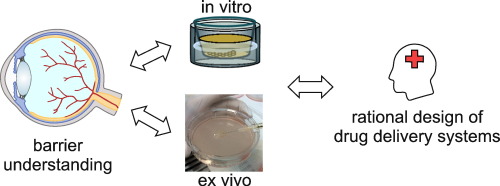Advanced Drug Delivery Reviews ( IF 16.1 ) Pub Date : 2017-09-19 , DOI: 10.1016/j.addr.2017.09.007 Karen Peynshaert , Joke Devoldere , Stefaan C. De Smedt , Katrien Remaut

|
Many ocular disorders leading to blindness could benefit from efficient delivery of therapeutics to the retina. However, despite extensive research into drug delivery vehicles and administration techniques, efficacy remains limited because of the many static and dynamic barriers present in the eye. Comprehension of the various barriers and especially how to overcome them can improve our ability to estimate the potential of existent drug delivery vectors and support the design of new ones. To this end, this review gives an overview of the most important ocular barriers for each administration route to the back of the eye. For each barrier, its biological composition and its role as an obstacle towards macromolecules, nanoparticles and viral vectors will be discussed; special attention will be paid to the influence of size, charge and lipophilicity of drug(s) (carrier) on their ability to overcome each barrier. Finally, the most significant available in vitro and ex vivo methods and models to test the potential of a therapeutic to cross each barrier are listed.
中文翻译:

用于研究眼后段药物传递障碍的体外和离体模型
许多导致失明的眼疾可从将治疗剂有效地递送至视网膜中受益。然而,尽管对药物递送载体和给药技术进行了广泛的研究,但由于眼中存在许多静态和动态屏障,因此疗效仍然有限。理解各种障碍,尤其是如何克服这些障碍,可以提高我们估算现有药物输送载体潜力的能力,并支持设计新的载体。为此,本综述概述了每种给药途径到眼后的最重要的眼屏障。对于每种障碍,将讨论其生物学组成及其对大分子,纳米颗粒和病毒载体的障碍作用;要特别注意尺寸的影响,药物(载体)克服每种障碍的能力的电荷和亲脂性。最后,最重要的列出了体外和离体的方法和模型,以测试治疗剂跨越每种障碍的潜力。


























 京公网安备 11010802027423号
京公网安备 11010802027423号